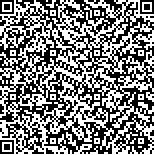下载中心
优秀审稿专家
优秀论文
相关链接
摘要

机载激光扫描技术能实时获取大范围、高精度的三维空间信息,从而受到日益广泛的重视和应用.然而由于地理环境的复杂性,其数据滤波一直是一个研究难点.针对数据点云的特点和滤波所面临的问题,提出了一种基于形态学梯度的机载激光扫描数据滤波方法.使用改进的形态学梯度计算方法得到每个点的梯度,再基于梯度选择特定的点进行迭代开运算,并根据梯度直方图减少迭代的次数,通过判断每次开运算后点的高程与原高程的差值是否小于一定的阈值,逐步滤除非地面点.使用国际摄影测量与遥感学会(ISPRS)提供的测试数据对算法进行实验,并与国际上8种滤波算法进行对比,结果表明该算法对各种复杂环境的适应性强,基于形态学梯度的滤波既能减少不必要的计算,又能降低误差产生的可能,从而在有效地去除非地面点的同时,也能很好地保留地面点,故具有良好的可靠性与实用性.
The technology of airborne LightDetection And Ranging (LIDAR) receives wider attention and broader application for the ability of rapid acquiring three-dmi ensional topographic measurements of large-scale areas. These measurements are three-dmi ensional point clouds with irregular spacing. The points include bare ground, buildings,vehicles, vegetation and so on. It is mi portant to identify and classify ground and non-ground points for generating DEM and extracting objects. Removing non-ground points from LIDAR datasets is called as filtering.In the last few years, a number of filtering algorithms have been explored. Butmost algorithms have more or less drawbacks and lmi itation in adaptability and correctness. Filtering is still a challenging task that is difficult to resolve for scene complexity. The topographic theory that filtering lies on are generally two aspects: one is that the natural terrain has continuity; the other is thatthe size ofobjectsoften has a range. Filteringbased onmathematicalmorphology is considered as a promising strategy because it combines the two above aspects. Butmost of researchers carry on erosion or opening operation using every point, which is tmi e-consuming and often cause errors.In order to overcome the weaknessmentioned above, a new method of filtering based on morphological gradient is proposed in this paper. The method mainly analyzes the distribution characteristic of LIDAR points according to morphological gradients, so as to choose the specific points to carry on themorphologicaloperation, whichmainly include following steps.Firstly, pointclouds are divided by an indexmesh, which can organize points effectively andmaintain the high resolution potential of raw data. Then, the morphological gradient of each point is calculated using the method suitable for filtering, and the low outliers are removed. Finally,some points are chosen based on gradients to carry on an mi proved opening operation iteratively.The iterative tmi es are controlled through analyzing the gradienthistogram. During each tmi e of iteration,a point is classified as an objectpoint if its difference of the heightafteropening operation and the originalheight ismore than a threshold.15 sample data sets are released by ISPRS especially for testing of filtering algorithms, mainly including situations when difficulties are encountered in different geographical environments, such as outliers,object complexity, attached\nobjects, vegetation and discontinuities in the bare ground. The semi-automatic filtering andmanual editing ofsample data have been done by ISPRS, whose results are used to evaluate resultof automatic algorithms. ISPRS also publish the test results and analysis of eight typical filtering algorithms. Themethod proposed in this paper is testedwith the sample data and compared with other filtering methods qualitatively and quantitatively. Qualitative assessment is done by visual representation of filtering results. Quantitative assessment is done by evaluating TypeⅠerror (rejection of bare ground\npoints), TypeⅡerror (acceptance ofobjectpoints as bare ground) and Total error.The expermi ental results show that themethod hashigh robustness in allkindsofcomplex scenes. The filterbased on morphological gradient can reduce the nonessential computation aswell as the possibility that errors happen. All types of\nerror are controlled smi ultaneously in a relatively small range. The topographic features are well preserved while object points are removed effectively. So themethod has good reliability and practicability.

